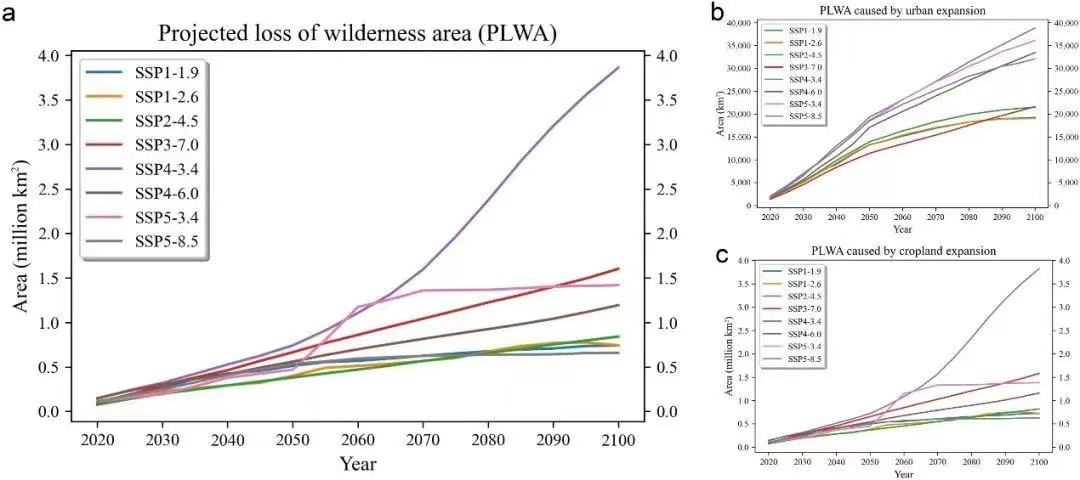Did you know that more than 95% of potential wilderness loss is driven by the expansion of cultivated land? Prof. Yang Rui, Dean of Tsinghua’s National Park Research Institute, reveals that 4.6 million sq. km of wilderness will be affected by 2100, threatening biodiversity and wilderness conservation. The study emphasizes the importance of taking immediate conservation measures to avoid losses of wilderness within protected areas.
Abstract
Wilderness loss is one of the main threats to biodiversity conservation and sustainable development. The post-2020 Global Biodiversity Framework of the Convention on Biological Diversity proposes “retaining wilderness areas” in the first target of the 21 action-oriented targets for 2030. However, we know little about the spatiotemporal pattern of potential wilderness loss in the future. We conducted the global analysis of projected loss of wilderness area (PLWA) due to land use and land cover change (LUCC) by 2100. This analysis has a spatial resolution of 1 km*1 km and emphasizes the impact of cropland and urban expansion considering multiple SSP-RCP scenarios. We found that a total of 4.6 million km2 of wilderness is susceptible to cropland and urban expansion (1.3 times larger than India) by 2100. Alarmingly, >51 % of PLWA is concentrated in just ten countries, and >23 % of terrestrial protected areas are projected to experience some PLWA. We call for urgent conservation actions to prevent further wilderness loss which is essential to fulfilling the post-2020 global biodiversity conservation goals.





